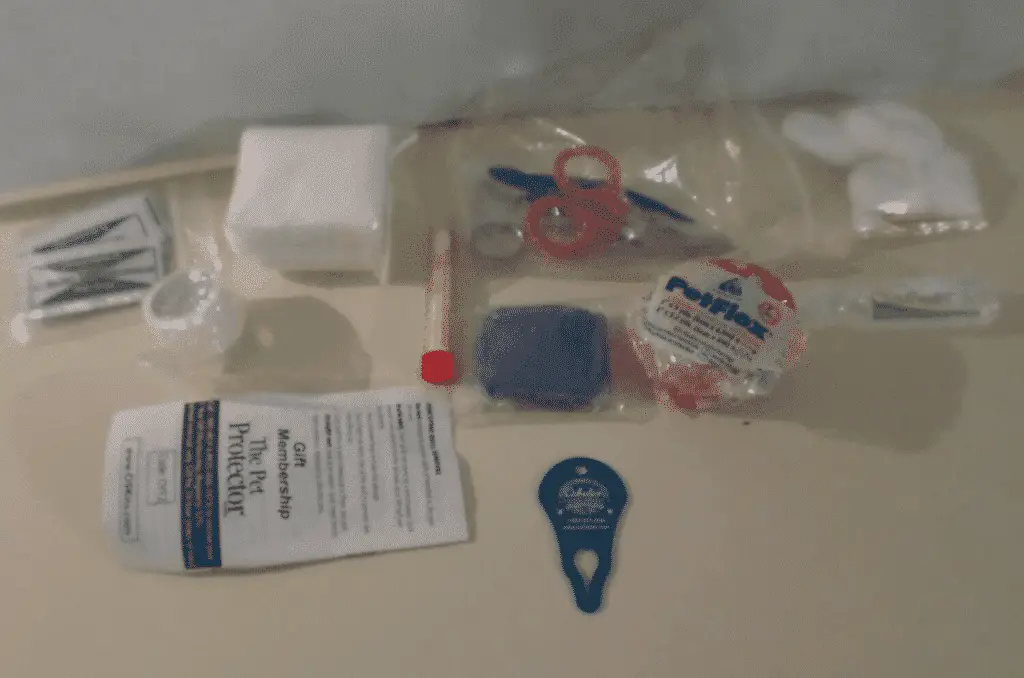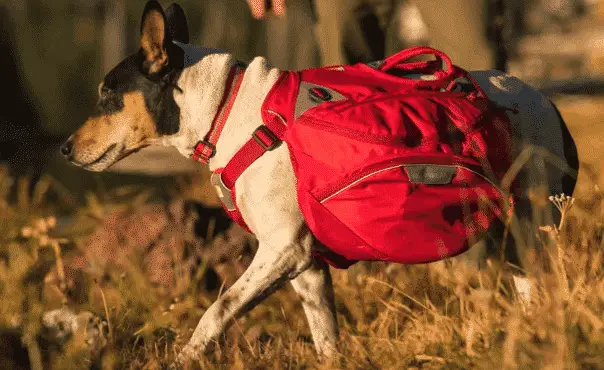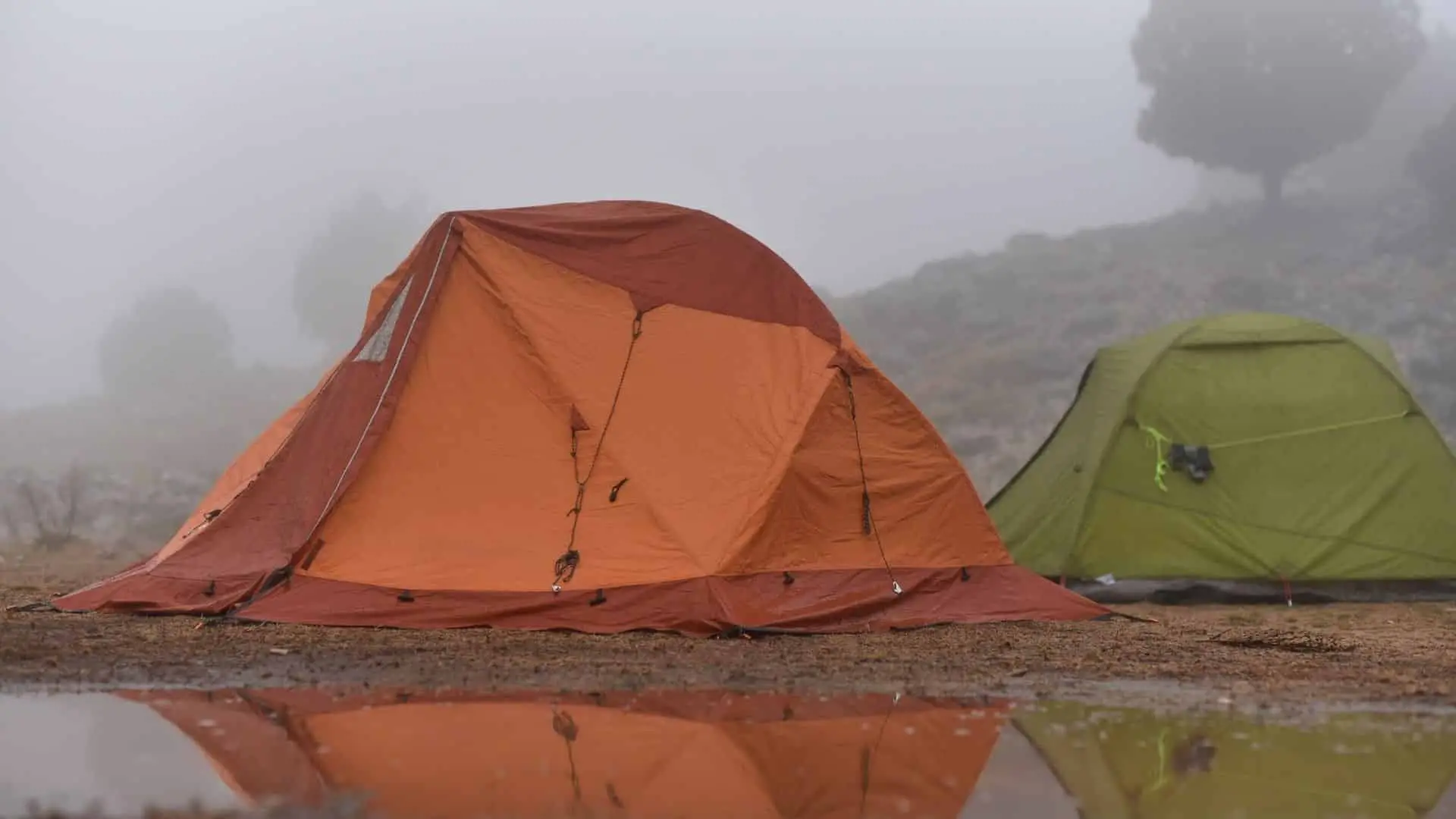Small dog breeds might seem like they have endless energy, but can they keep up on a long hike? They might not be your first choice for rough terrain, but you’d be surprised how tough small dogs can be.
Can I Take My Small Dog Hiking? Yes you can take a small dog hiking, but you will need to take extra safety precautions. Just make sure your dog is physically ready to hike, slow down, watch for overuse injuries and take plenty of breaks.
Just because your dog’s small doesn’t mean you can’t go hiking. Look at the top active breed categories at dog shows. Small breeds like Jack Russell’s Corgi’s and Shetlands can really put on a show.
It doesn’t matter what breed your dog is. A young and healthy dog will almost always enjoy going for a hike. With that being said, there are a few extra safety precautions you will nee to take. The following tips will help keep your dog safe and happy on your next hike.
Table Of Contents
Tips For Taking a Small Dog Hiking
I try to take my dog Zoey out on the trail every weekend. As a Beagle/Bulldog mix (aka Beabull) she’s by no means an active breed, but she loves hiking.
If her short chubby butt can make it up the trail just about any dog can. We usually stick to short 2-3 hour hikes (about 5 miles), but longer day hikes aren’t a problem.
We started off by slowly building up her hiking skills and working on trail etiquette. Now she walks by my side with a hands free leash (this one) attached to her trail backpack (Ruffwear Approach Pack).
Just about any dog will eventually be able to out hike their human companion. If your dog’s a lazy couch potato, they need to start slow and build up their hiking skills/strength over time.
How to Build Up a Small Dogs Hiking Skills
It will take some work to get your dog trail ready. A couch potato doesn’t turn into an athlete overnight. You’ll have to work on slowly building up your dogs hiking skills over a few weeks/months.
It’s not all about building up your dogs strength. You’re responsible for everything your dog does on the trail. Before you hit the trail a dog needs to learn the following basic obedience skills.
- Behave With Other Animals and People: Ever hear the term “Small Dog Syndrome“? Small dogs tend to get away with aggressive behaviors that would never be tolerated with larger dogs. Your dog can’t growl, jump and bark at everybody they meet on the trail.
- Listen to Basic Commands: Your dog needs to be able to follow basic commands. They need to be able to sit, stay, down and come immediately (this is for your dogs own safety).
- Impulse Control: There will be lots of distractions on the trail. You’ll run into different sights, smells, sounds and animals.
- Build Up Strength: Work on your dogs strength as you’re building up their trail etiquette. Start going on short walks on flat easy trails. A small dog will usually be able to out hike their human after a month on the trail.
Basic Training Options
I’ve never met a dog that you couldn’t train to behave on a hiking trail. You might need professional help with aggressive dogs, but minor behavior issues can usually be handled at home.
With that being said, it’s well worth spending the money on a puppy or adult basic obedience class. Getting your dog socialized, used to walking on a leash and listening to basic commands is 99% of the battle.
Dog training classes are more about training humans than the dog. You learn how to read your dog and communicate with clear messages.
Start Off On Easy Trails
Small dogs hike with the same enthusiasm as larger breeds, but they can get into trouble fast. Tiny legs just aren’t built for some of the tougher challenges on the trail.
Start off hiking flat easy trails that don’t have a lot of people. You can usually find trail reports online for local trails. We go down to a short flat 2 mile trail a few days per week. It’s not the most exciting trail in the world, but it’s better than working.
Try to avoid large rocky scrambles and highly uneven terrain. Leaping off tall structures puts a lot of pressure on a small dogs hips, legs and spine. Help them climb up and jump down to avoid unnecessary injury.
Keep an eye out for creek and river crossings. Most dogs can swim, but a strong current poses a serious danger to smaller dogs. Keep a hand on your dogs harness when hiking near water and be ready to turn around if you encounter rough water.
Use a Body Harness or Dog Backpack

It took years for me to finally bite the bullet and pick up my first dog backpack. Now I would never go back to hiking without one.
We started off with the Ruffwear Approach Pack and eventually upgraded to the Palisades Pack because it’s easier to take off. My cousin has the Outward Hound Pack which is a smaller/cheaper option.
Your dog will be able to carry all their own gear(food, water, toys, bed) and it gives them a sense of purpose. Zoey gets so excited whenever I take out her pack. She knows that we’re going for a hike!
At the very least you’ll want to pickup a nice harness that doesn’t rub. Smaller dogs need assistance on the trail. The handle will help lift your dog over obstacles and stabilize them in rough terrain and stream crossings. Plus red and orange vests will increase visibility if your dog gets away from you.
Don’t Overload A Small Dogs Hiking Pack
Small dogs aren’t meant to carry a lot of weight on their backs. Most dogs can handle carrying 25% of their total bodyweight. Puppies and senior dogs should only carry 10%-15%.
Check out my post explaining how much weight dogs can carry in a backpack for more info.
Let your dog get used to carrying an unloaded pack and slowly add weight over the next couple of weeks. Load the pack with a few lbs around the house so they can build up strength. They should be good to hit the trail with a fully loaded pack after a month or so.
Take Extra Breaks
You will need to take lots of breaks when hiking with a small dog(especially in the summer). Those tiny legs won’t be able to keep up without getting tired. I like to take a quick 5 minute break every 30 minutes to 1 hour.
Smaller breeds tend to overheat faster than larger breeds. Those tiny legs have to move fast to keep up. Pay special attention to brachycephalic breeds like bulldogs and pugs. They have short noses and breathing problems so they have trouble hiking in warm weather. Ruffwear Cooling Vests are another great option in hot weather.
My dog Zoey carries food and water in her backpack, but I bring an extra liter bottle of water just in case. I could always pour some water out of my Camelbak Hydration Bladder in an emergency.
Bring Lots of Food and Treats

Your dog burns lots of calories on long hikes. Pack extra food and treats to keep your dogs energy levels up. Those tiny legs will be moving fast and they need refueling.
I usually fill this collapsible dog bowl (pictured above) and bring an extra ziplock for a late hike refill. It can double as a water bowl, but I prefer these collapsible silicone bowls for water.
It’s hard to calculate how much food to bring for a small dog. Plan on doubling the normal food intake for short hikes and even more on longer/challenging hikes.
Keep an extra days worth of food in your pack and lots of treats as a reward. Pick up a pack of smell proof bags when hiking in bear country. I really like the reusable Loksak Opsak Bags.
Watch For Signs of Injuries and Exhaustion

Small breeds seem like they have endless energy, but that can get them into trouble. They start running themselves ragged trying to keep up and experience all the new sights and smells.
Setting the pace, planning breaks, and setting realistic goals is up the dog owner. Recognize your dogs limits and set realistic hiking goals. Start off slow, look for signs of exhaustion and know when your dog has had enough.
This is especially important with dogs that are new to hiking. It takes months/years to build up endurance for challenging hikes. You didn’t go from being a couch potato to trail master overnight so don’t expect that out of your dog.
Start off with small leisurely hikes and build up to more challenging trails. Watch for signs of exhaustion/overheating. Cut the hike short when you see excessive panting, fatigue and wobbly legs. Take a long break in the shade and give your dog lots of food and water.
Be ready to carry your dog out in emergency situations and straight to the vet. You might want to carry a basic first aid kit for your dog as well.
Pay Special Attention To Predators
I never even thought about predators until I started hiking near my parents place in Florida. I’ve dealt with the occasional coyote and bear in Ohio, but hiking Florida trails is a whole other beast.
You have to deal with alligators, bear, Florida Panthers, wild boar, coyotes, snakes and aggressive monkeys (infected with HIV). The list of wild predators just keeps going. I had a monster boar chasing alongside my bike on a bike trail on the outskirts of Tampa (thank god I didn’t have my dog).
Keep an eye out for predator warnings signs at the trail head. Small dogs might look like a tasty treat for an aggressive predator. It’s always a good idea to use a leash, but it’s especially important with dangerous wildlife.
Other FAQ When Hiking With Small Dogs
1. Start off working on basic commands around the yard. Head to a local park once your dog understands the come, stay, down and sit commands.
2. Start off hiking easy trails close to home. Focus on getting your dog used to listening to commands on less busy days. Start off with short 30-60 minute walks 4-5 days per week and work your way up to day/overnight hikes.
3. Turn around before your dog gets over exhausted. You might need to carry your dog out if they get overworked. Remember that it’s better to turn around early than risk injury.
4. Slowly build up the hiking difficulty and keep progressing. Don’t force your dog to hike if they don’t enjoy it. Some dogs just aren’t meant to go on long hikes.
Unfortunately, you shouldn’t hike with a puppy regardless of it’s size. They don’t have the physical or mental skills required to perform on the trail. You’re better off heading to the local dog park once they have puppy shots.
Some small dogs just don’t like wearing a harness or pack. It can be a lot of extra weight on your dogs back. If your dog doesn’t like the harness you’re not giving them the right incentive.
1. Give your dog lots of treats and praise if they’re afraid/hate the harness. They should start associating the harness with food and fun.
Start by carrying the harness around, setting it on the ground and slowly progress to slipping it over their head. Use a treat to lure their head through the harness. Reward them for put their head throught the hole.
You don’t even need to strap up the legs and belly if they fight. That will come with lots of treats and patience.
2. Try to strap up the chest once they’re comfortable putting their head in the harness. Let them walk around the house with the harness on before heading to the trail. They might not love it, but they won’t run away and try to get it off.
Some dogs just want to sniff everywhere they go. It comes from 1000’s of years of being bred to hunt. That doesn’t mean your dog can’t be trained to walk on a leash.
It’s all about training your dog to walk on a leash. Sniffing is to be expected, but a light tug and lets go is all you should need to get your dogs attention and back on the trail. There’s plenty of time to sniff when you take a break.
Some dogs are more susceptible to foot injuries than others. Watch out for torn pads, cuts/scrapes and objects getting lodged in the foot. Going on regular hikes will toughen up your dogs feet.
I regularly use Musher’s secret paw wax to protect paws and prevent tears. You might need dog booties in the snow depending on where you live. It’s all about protecting their feet from chemical deicers and salt. You’ll rarely have problems once you leave the sidewalk and hit the trail.
Small dog’s won’t be able to hike as far/fast as larger breeds, but they can probably out hike an untrained human. Small dogs are more capable than most people think. You can easily go on 5-10 mile hikes with lots of breaks.



